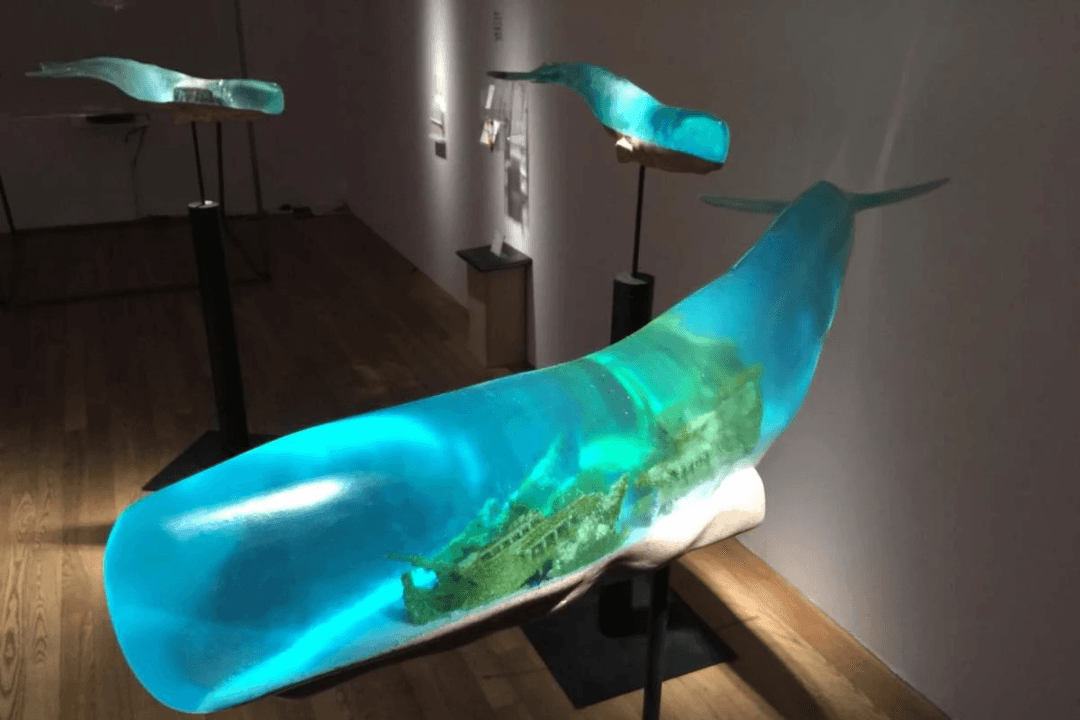Six beautiful translucent whales float in a circle, each carrying a sublime scene in its body, as if it absorbed a piece of the sea’s bottom or perhaps something from another world.
For Isana Yamada, this is not a guessing game though—each detail has its meaning behind it.
Yamada, a 27-year-old Japanese artist and designer, has perhaps always been an artist at heart.
“I’ve loved drawing and handicrafts ever since I can remember,” he told me in a Facebook interview, translated from Japanese. “But it was in high school when I was really inspired to start pursuing art.”
Through a teacher who oversaw his high school art club, he met a very enthusiastic lecturer from the Tokyo University of the Arts (Tokyo Geijustu Daigaku or “Geidai”) and decided to go to Geidai and pursue art as a career.
Of course, getting in one of the most prestigious private art schools in Japan is not just a matter of a whim. It took him four years of trying and three years in a cram school before he was finally accepted in 2010.
The Idea of Whales
Picking whale as a subject has a personal connection for Yamada. His first name (勇魚—Isana) means “whale” in old Japanese—literally “brave fish.” And there’s another meaning to it. Whales are migratory animals, and Yamada wants his art, too, to transcend borders.
For his master’s degree graduation art work, he envisioned sculptures of whales floating in a circle. He figured he'd create six whales for that purpose so he was looking for an idea that would connect the image of a whale with the number six.







